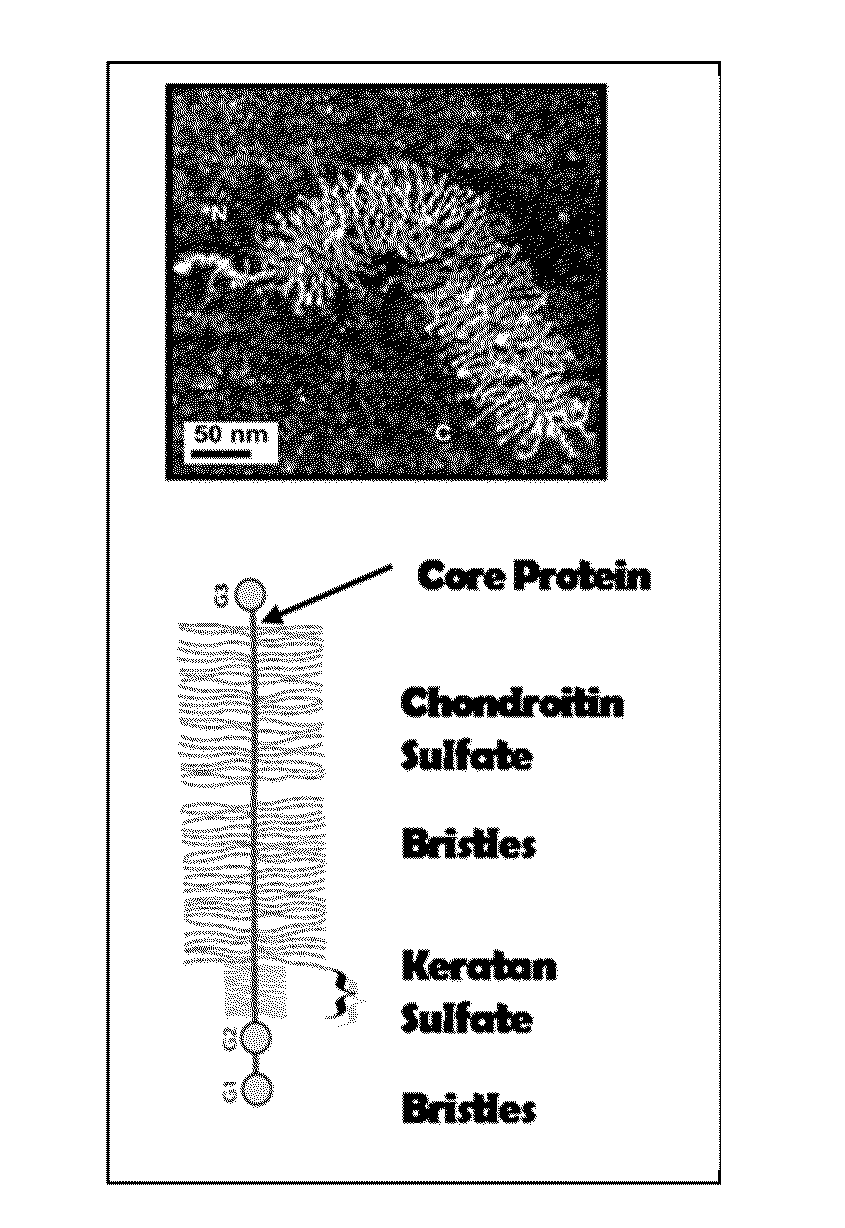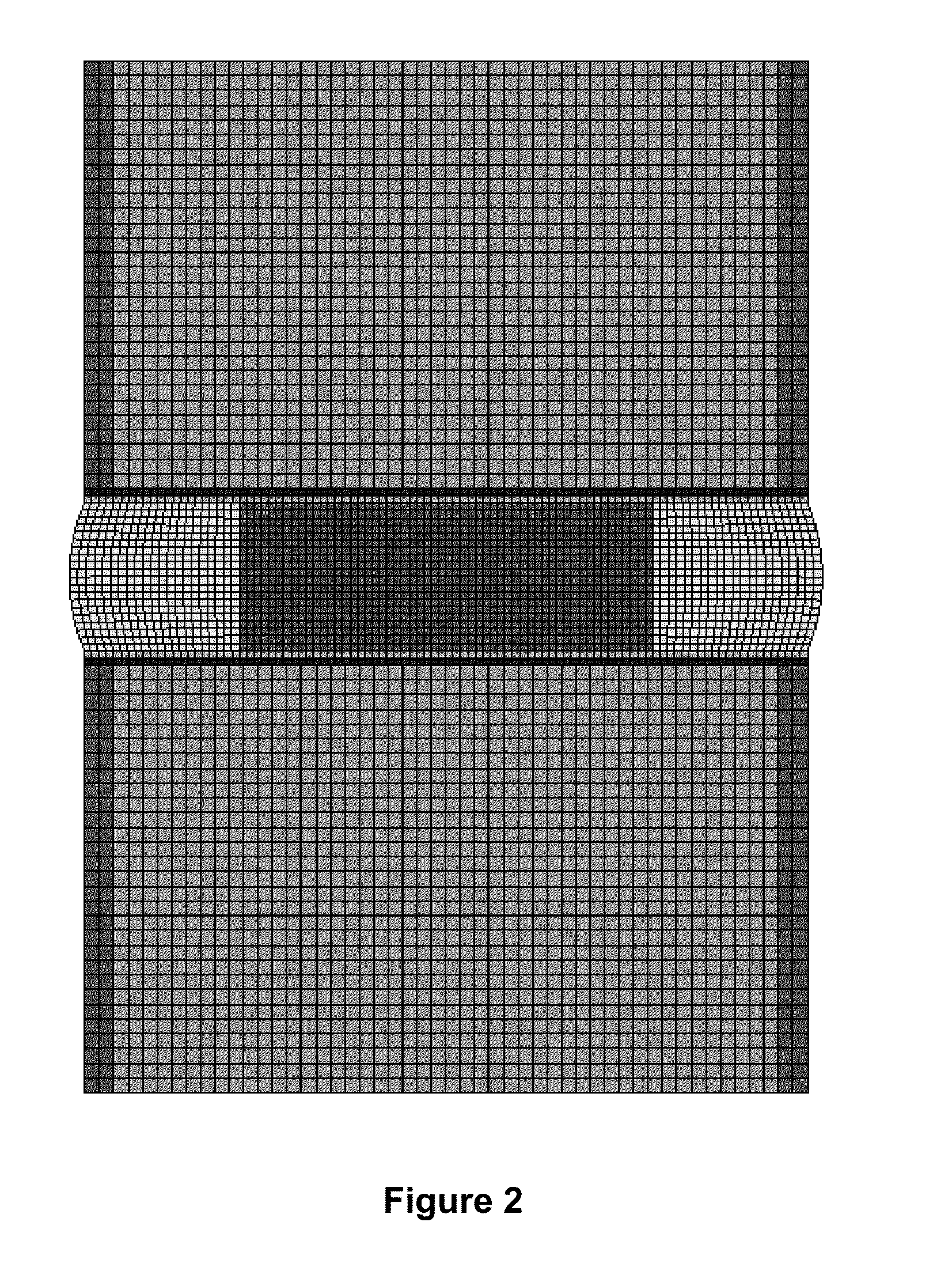Compositions and Methods for Treating a Disorder or Defect in Soft Tissue
a technology of soft tissue and compositions, applied in the direction of drug compositions, cardiovascular disorders, peptides, etc., can solve the problems of increasing the risk of medical complications, intense pain and restricted motion, and limited success of long-term correction of structures in the body
- Summary
- Abstract
- Description
- Claims
- Application Information
AI Technical Summary
Benefits of technology
Problems solved by technology
Method used
Image
Examples
example 1
Effect of Aging and Degeneration on Fluid Exchange, Stress Concentrations and Osmotic Pressure of the Human Intervertebral Disc During the Diurnal Cycle
[0310]The human intervertebral disc is the primary compression-carrying component of the spine. Its roles are to transmit and distribute loads, and allow for the necessary flexibility of the spine. It is comprised of a central gel-like nucleus pulposus, an outer annulus fibrosus, and upper and lower endplates consisting of cartilaginous and bony portions. During a diurnal cycle, the intervertebral disc experiences approximately 16 hours of functional loading (standing, sitting, etc.), followed by 8 hours of recovery (lying prone). Therefore, the fluid lost during the loading period must be replenished in half the time. As the disc is compressed and fluid is exuded, the density of the fixed charges within the nucleus pulposus is increased, creating an osmotic gradient with the interstitial fluid surrounding the disc. This osmotic pote...
example 2
Restoration of Proteoglycan to the Nucleus Pulposus of the Intervertebral Disc
[0326]The intervertebral disc is the largest avascular tissue in the human body and is mainly comprised of three different tissues. The central core, the nucleus pulposus, is surrounded by the outer annulus fibrosus and the upper and lower cartilaginous endplates. Lower back pain was reported in more than 80% of the cases exhibiting degeneration of lumbar intervertebral discs (Luoma et al., 2000, Spine 25(4):487). With aging, the proteoglycan and water content in the central nucleus reduces significantly, causing abnormal loading to the outer annulus (Urban et al., 1988, Spine (Phila Pa. 1976) 13(2):179-87; Luoma et al., 2000, Spine 25(4):487; Yerramalli et al., 2007, Biomechanics and Modeling in Mechanobiology 6(1):13-20; Urban et al., 2003, Arthritis Research and Therapy 5(3):120-38; Roughley et al., 2002, Biochemical Society Transactions. 30:869-74; Tropiano et al., 2005, The Journal of Bone and Joint S...
example 3
Nucleus Pulposus Augmentation
[0338]Prior work has investigated the role of the nucleus pulposus in human lumbar intervertebral disc mechanics. The nucleus is critical to the stability of the disc through the neutral zone (Joshi et al., 2008, J. Biomech. 41(10):2014-111). Alter denucleation of the intervertebral disc, the neutral zone as well as the full range of motion was shown to increase significantly over the same measurements for the intact disc to which they were normalized. In addition, the stiffness of the disc through the neutral zone region was significantly reduced from that of the intact disc. This study shows that the nucleus is critical in providing stability to the intervertebral disc. In a separate study, the effect of inserting a hydrogel polymer into the nucleus cavity of an intact disc was investigated to determine the volume of material that can inserted and the resulting mechanical behavior of the augmented disc. It was shown that a linear relationship among vol...
PUM
| Property | Measurement | Unit |
|---|---|---|
| Fraction | aaaaa | aaaaa |
| Fraction | aaaaa | aaaaa |
| Structure | aaaaa | aaaaa |
Abstract
Description
Claims
Application Information
 Login to View More
Login to View More - R&D
- Intellectual Property
- Life Sciences
- Materials
- Tech Scout
- Unparalleled Data Quality
- Higher Quality Content
- 60% Fewer Hallucinations
Browse by: Latest US Patents, China's latest patents, Technical Efficacy Thesaurus, Application Domain, Technology Topic, Popular Technical Reports.
© 2025 PatSnap. All rights reserved.Legal|Privacy policy|Modern Slavery Act Transparency Statement|Sitemap|About US| Contact US: help@patsnap.com



